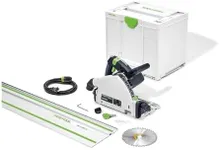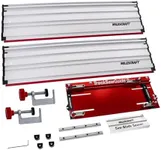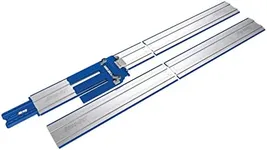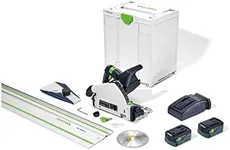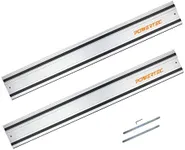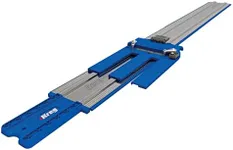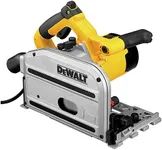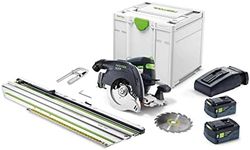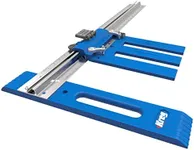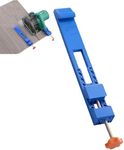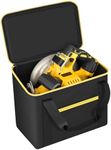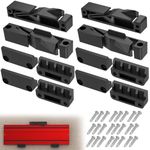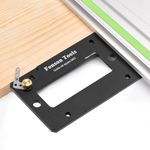Buying Guide for the Best Circular Saw Track System
Choosing the right circular saw track system can significantly enhance your woodworking projects by providing precise, straight cuts. To find the best fit for your needs, it's essential to understand the key specifications and how they impact performance. Here are the main factors to consider when selecting a circular saw track system.Track LengthTrack length determines how long a cut you can make in one pass. This is important because it affects the efficiency and convenience of your work. Track lengths typically range from 2 to 8 feet. For smaller projects or if you have limited workspace, a shorter track (2-4 feet) might be sufficient. For larger projects or if you need to make long, continuous cuts, a longer track (6-8 feet) would be more appropriate. Consider the size of the materials you usually work with to choose the right track length.
CompatibilityCompatibility refers to whether the track system can work with your existing circular saw or if you need to purchase a new saw that fits the track. This is crucial because not all saws fit all tracks. Some systems are designed to be universal, while others are brand-specific. Check the specifications of your circular saw and the track system to ensure they are compatible. If you already own a circular saw, look for a track system that matches it. If you are buying both, consider a system that offers the best combination of features for your needs.
Material and Build QualityThe material and build quality of the track system affect its durability and precision. Tracks are usually made from aluminum or steel. Aluminum tracks are lightweight and resistant to rust, making them easy to handle and maintain. Steel tracks are heavier but offer greater durability and stability. If you need a portable system, aluminum might be the better choice. For heavy-duty use, steel could be more suitable. Assess how often and in what conditions you will use the track system to decide on the material.
Anti-Slip FeaturesAnti-slip features help keep the track in place during cutting, ensuring accuracy and safety. These features can include rubber strips on the bottom of the track or clamps that secure the track to the workpiece. Anti-slip features are important because they prevent the track from moving, which can lead to uneven cuts or accidents. If precision is critical for your projects, look for a track system with robust anti-slip mechanisms. For occasional or less precise work, basic anti-slip features might suffice.
Ease of Setup and UseEase of setup and use refers to how quickly and effortlessly you can get the track system ready for cutting. This includes how easy it is to align the track, attach the saw, and make adjustments. A user-friendly system can save you time and reduce frustration. Look for features like clear markings, quick-release mechanisms, and intuitive design. If you are a beginner or value convenience, prioritize systems that are known for their ease of use. Experienced users might be comfortable with more complex setups if they offer advanced features.
